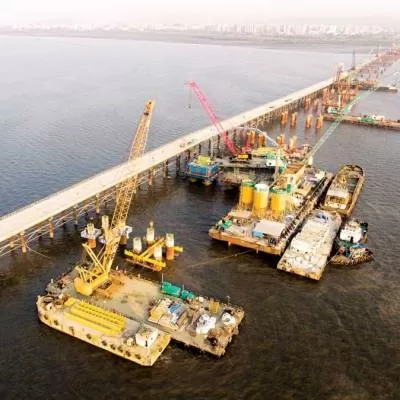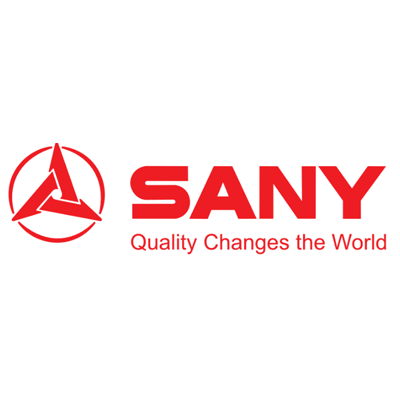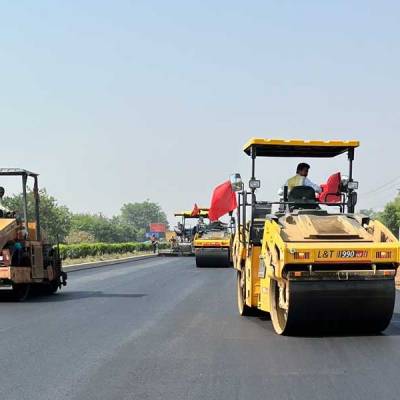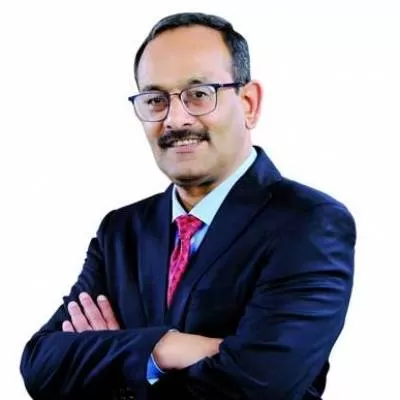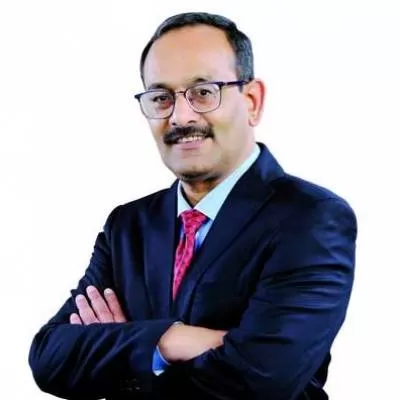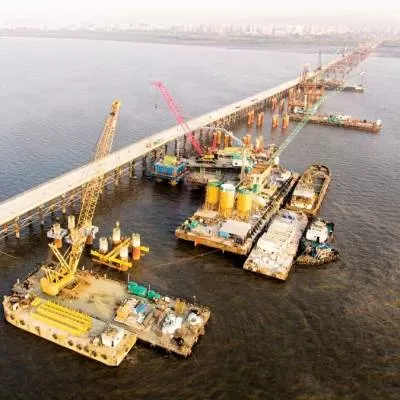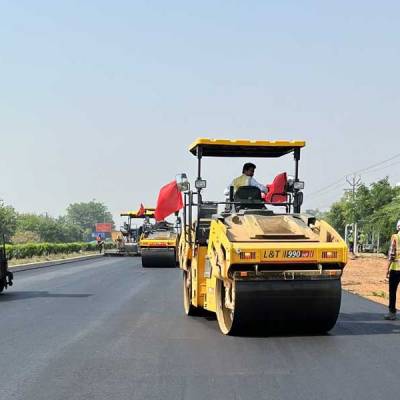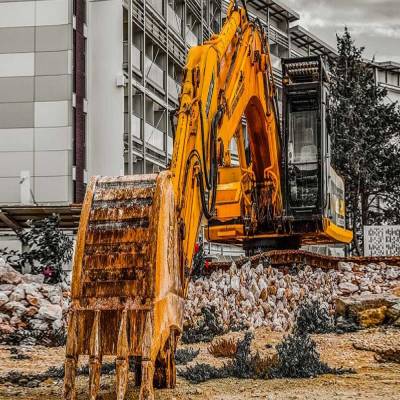- Home
- Technology
- Advanced technologies in pavers and compactors could benefit India. Know how!

Advanced technologies in pavers and compactors could benefit India. Know how!
Pavers and compactors have had a good run in recent years on the back of buoyant road construction. Over the past three years, the demand for compactors has doubled to 5,000 units per annum while the demand for sensor pavers has registered a modest increase to 3,300 units per annum, says <span style="font-weight: bold;">Ramesh Palagiri, Managing Director& CEO, Wirtgen India. </span><br /> <br /> ''About 4,800 units of compactors and pavers were sold in the Indian market in 2017,' says Ajay Aneja, Brand Leader, CASE India. ''Road construction accounted for 8 per cent of this volume. Growth in 2017 was 23 per cent higher than 2016; we are expecting record growth in 2018.'<br /> <br /> In the last fiscal, vibratory compactor sales crossed 5,000 units, valued at over Rs 10 billion, while in the past few months, sales crossed more than 500 units on a back-to-back basis, a first for the country, notes <span style="font-weight: bold;">Rajinder Raina, General Manager, Escorts Construction Equipment.<br /> <br /> Bright prospects</span><br /> The government's plans to invest Rs 7,000 billion ($108 billion) to build 83,677 km of roads in the next five years, and increase road construction from about 23 km a day to 40 km a day, have made road pavers, particularly sensor pavers, increasingly important, says <span style="font-weight: bold;">Dimitrov Krishnan, Vice President & Head, Volvo CE India. </span><br /> <br /> He expects 20 per cent growth in soil, asphalt and mini tandem sales in 2018, and 15 per cent growth in paver sales.<br /> <br /> ''A minimum 10 per cent growth across all product categories is a given,' says Raina. ''This year has got off to a good start.'<br /> <br /> ''If the market remains conducive, I expect 10-12 per cent growth in the year ahead,' opines Blesson Varghese, a leading equipment consultant.<br /> <br /> ''Continuing government investments in roads make us optimistic about our future prospects,' says <span style="font-weight: bold;">Ankur Tiwari, Senior Manager, Sales & Marketing, Ammann India.</span><br /> ''We have grown faster than the industry in the past two years and are confident of growth this year as well,' says Aneja. ''CASE India believes infrastructure development will take precedence over the next 10 years.' <br /> <br /> <span style="font-weight: bold;">Key drivers</span><br /> ''Of all the infrastructure sectors driving demand for compactors - comprising of roads and highways, mining, real estate, power, railways - the leading sector is currently roads and highways with many large-scale projects being implemented,' says <span style="font-weight: bold;">Jasmeet Singh, Head-Corporate Communications and Corporate Relations, JCB India,</span> which offers three world-class products in road construction solutions: The VMT330 (a 3T-class mini tandem roller), the VMT 860eco (a 9T-class tandem roller) and the JCB116 (a 11T-class soil compactor). ''Irrigation and water conservation are fast picking up and emerging as growth drivers. <br /> <br /> We are also seeing green shoots in railways, ports, airports, etc. Balanced growth across sectors is vital to ensure long-term sustained growth.' <br /> <br /> <span style="font-weight: bold;">Popular pavers</span><br /> Paving technology in India is graduating from mechanical to sensor pavers. India annually demands over 500 units of mechanical pavers and 350 units of sensor pavers, says Raina. <br /> <br /> ''Of these, 225 to 250 units are 5.5-m pavers, used primarily for state roads. Just about 100 units of the 9m-plus class market are demanded. About 350 wheeled and tracked machines are sold.'<br /> <br /> Pavers of width up to 5.5 m accounted for over 70 per cent of the Indian paver market in 2017, says Aneja. ''The 5.6-7.5-m class is used in small numbers for the construction of single-lane district and rural roads while the larger 9-m and above finishers are best suited for double-lane applications, and are invariably track-mounted and fully hydrostatic.'<br /> <br /> ''We're seeing more users look for sensor pavers with intelligent operating technology to help satisfy three requirements in line with highway design: Mat thickness, level of the mat, and the grade required,' says Krishnan. <br /> <br /> ''Regular pavers without sensors simply follow the undulations of the road base and are, therefore, unable to give a smooth finish to a paved surface.'<br /> <br /> In India, Volvo offers the P4370B ABG (wheeled) and the P5320B ABG (tracked) sensor pavers, both made in Bengaluru, offering a basic paving width of 2.5 m and 4.75 m respectively, and maximum paving width of 7 m. Additionally, Volvo offers imported sensor pavers with widths of 9 m, 10 m, 13 m, and 16 m, the most popular being the P6820C ABG.<br /> <br /> Deshmukh & Co, a construction company that rehabilitated a 130-km national highway and upgraded the road from Aurangabad to Dhule in four months flat, says Volvo pavers are easily best-in-class in terms of paving quality and trouble-free operations. ''Sounds impossible, doesn't it? But we did it - thanks to the Volvo P4370B paver, which helps builds roads faster and better, a definite advantage in our business where margins often come under pressure,' says <span style="font-weight: bold;">Balasaheb Deshmukh, Chairman and Managing Director, Deshmukh & Company.</span><br /> <br /> While the award of concrete highway projects had boosted demand for slipform pavers, Palagiri expects the government to offer a combination of concrete and bituminous roads going forward.<br /> <br /> ''Concrete roads are far more expensive to construct, which justifies their use in heavy traffic corridors, hilly terrains and areas seeing heavy rainfall but not in areas where the road network needs to be expanded for low to medium traffic at an optimum cost,' he says.<br /> <br /> <span style="font-weight: bold;">Hot-selling compactors</span><br /> Vibratory compactors accounted for 96 per cent of compaction equipment sales owing to their high compaction force, reliability and cost-effectiveness, says Aneja. Within this, he includes both soil and tandem vibratory compactors, which CASE India caters to with its 1107EX, 1107EX-D, 1107EX-PD vibratory soil compactors, 450 DX vibratory mini tandem compactor and the newly released 752 EX vibratory tandem compactor.<br /> Whereas mini compactors comprise 6-8 per cent of the volume, the balance is shared by soil and tandem vibratory rollers in the ratio of 60:40 respectively, reckons Raina.<br /> ''Demand for soil compactors and tandem rollers go together; you need both for road widening projects,' opines Singh. ''For a smaller span, the JCB mini tandem roller is a perfect fit.'<br /> <br /> ''Static rollers are (mostly) used by small contractors for the repairs and maintenance of minor roads,' notes Aneja. ''Last year, this category comprised about 3 per cent of the compaction equipment market.' <br /> <br /> Pneumatic tire-rollers are mostly used for surface sealing, an application generally limited to major roads and highways, adds Aneja, where these accounted for the balance 1-2 per cent.<br /> <br /> While most Indian users prefer 10 to 11-tonne soil compactors to meet government norms and achieve the requisite compaction, Raina expects a surge in demand for soil compactors of capacity greater than 11 tonne, capable of better/deeper compaction, driven by the increase in the load-bearing capacity of vehicles expected to ply on new roads, while 10-tonne compactors will continue to be demanded for state and rural roads, irrigation canal works and sundry jobs.<br /> <br /> <span style="font-weight: bold;">Localisation advantage</span><br /> Localising equipment is commonly understood to bring down the cost. This also depends on the volume, and makes sense if there is a saving of 20-30 per cent, says Palagiri.<br /> <br /> With the aim to retain its leadership status in a highly competitive environment and give customers a price advantage, Ammann Apollo has invested in its tandem roller ARX 91, soil compactor ARS 121 and its popular 7m AFT 500 tracked asphalt paver. ''Localising has given our customers a 20-30 per cent price advantage in buying products featuring the best Swiss technology,' says Tiwari.<br /> <br /> Localisation also brings down the cost by ensuring the technology is appropriate for the need, says Palagiri. ''In value-conscious India, where customers are not overly conscious of technology - although I hope this will soon change (see box) - offering just the features in demand by making the machine locally can bring down the cost.' <br /> <br /> <span style="font-weight: bold;">User, be feature-wise!</span><br /> Price remains the deciding factor in about 60 per cent of buys, Raina reckons. Reliability, cost of operations and service are also considered. Buyers of machines for national highways and expressways look for productivity.<br /> <br /> Varghese recommends that users look for a good service and spares support network and features that could help improve RoI, efficiency, and productivity, urging, ''support companies that invest in better training, service support and a long-term commitment to serve the market.'<br /> <br /> ''Customers today look for productivity, reliability, efficiency and, most important, robust product support,' says Singh. ''All these parameters play a critical role in the equipment-buying decision.'<br /> <br /> Taking a step further, JCB India has introduced Livelink, an advanced telematics technology that enables users to get SMS alerts on their mobile phones or smart devices regarding service alerts, operations and security of their machines. The information is available in real time regarding the health of the machine including engines and gives vital information to the customer in terms of number of hours the machine has been operational, service intervals, fuel levels, malfunctions if any, etc. It thus enables better site management and equipment utilisation. Singh shares, ''The Livelink technology in JCB machines benefit the customers in efficient fleet management, which leads to better expense management and timely completion of work. This information makes a huge difference in the efficiency and costs of the entire operation.'<br /> <br /> Users look for fuel efficiency, reliability, low operational costs, and maximum productivity, implying optimum compaction in fewer passes, opines Aneja.<br /> With the Ammann ARS 121 soil compactor, ''we have achieved compaction in fewer passes, which has resulted in savings in diesel/fuel cost,' says <span style="font-weight: bold;">Avinash Bhartia, Director, Bhartia Infra Projects. </span><br /> <br /> ''Other positives are excellent after-market support, better operating comfort, which allows the operator to use the compactor for longer periods, and excellent traction in climbing gradients because of the direct-drive concept on the wheels.'<br /> <br /> <br /> <span style="font-weight: bold;">Geography and the demand for pavers-compactors</span><br /> ''New geographies are contributing to sales,' says Blesson Varghese, a leading equipment consultant. ''Parts of India that hadn't witnessed much road building have now seen activity. By encouraging new entrants, this boosts demand.'<br /> Sales are spread across the country. In particular, the Northeast market is heartening, according to <span style="font-weight: bold;">Rajinder Raina, General Manager, Escorts Construction Equipment.</span><br /> Demand is predominantly centred in the North, West and East, with fewer projects being implemented in the South, although quite a few opportunities have recently come up in Karnataka, says Ramesh Palagiri, Managing Director & CEO, Wirtgen India.<br /> ''Geographical conditions influence product configuration,' says Ajay Aneja, Brand Leader, CASE India. ''In hilly terrain, customers prefer soil compactors with a drum drive; in hot/cold climates, customers prefer compactors with an air-conditioned closed cabin.'<br /> <br /> <span style="font-weight: bold;">Advanced Road Technologies India Could Benefit From</span><br /> ''India is one of the toughest markets on the price/quality index, a situation that allows only basic and robust machines to enter the market while new technologies, operator comfort, Internet of Things and other features find it hard to enter the market space,' says Blesson Varghese, a leading equipment consultant.<br /> Although Indian customers are value-conscious and prefer economy products, <span style="font-weight: bold;">Ankur Tiwari, Senior Manager, Sales & Marketing, Ammann India,</span> believes technology adoption in the country is rapid with the government forming expert committees of eminent academicians and industry experts to recommend the latest road construction technologies that are apt for India.<br /> <br /> <span style="font-weight: bold;">Ramesh Palagiri, Managing Director & CEO, Wirtgen India, </span>expects India to see the greater application of advanced road construction technologies offered by Vogele, such as in-line paving of hot-mix asphalt layers to pave the binder layer and wearing coat in one pass; mobile feeders to transfer the hot mix to the paver non-stop and without contact; non-contact road scan temperature measurement systems to verify that the freshly paved asphalt has been maintained at a constant temperature; spray jet pavers to overlay hot-mix asphalt on fresh emulsion as soon as it is sprayed, while rehabilitating roads; cold in-situ recycling of damaged pavements of asphalt highways with foam bitumen; two-lift concrete paving involving the placement of two wet-on-wet layers instead of the homogenous single layer commonly placed in concrete paving; and cement stabilised bases/sub bases involving stabilising locally available inferior quality material like gravel, fly-ash, stone dust, reclaimed asphalt pavement, typically with Portland cement and lime, to improve its stiffness and tensile strength.<br /> <br /> <span style="font-weight: bold;">- Charu Bahri</span><br />


